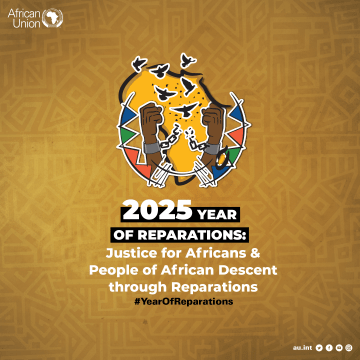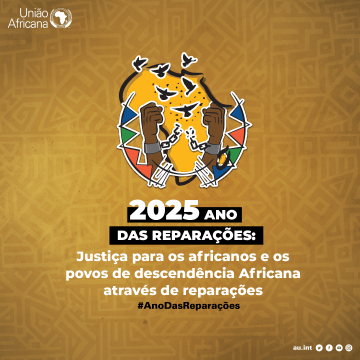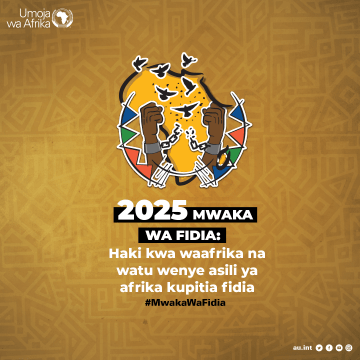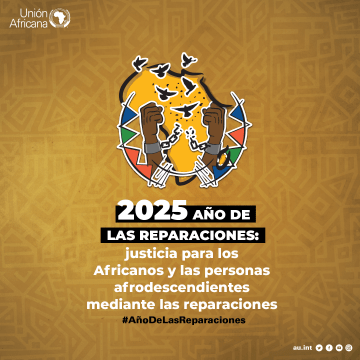The African Commission adopted the 2015-2019 Strategic Plan in May 2015. Since inception in 1989, the Commission has so far adopted and implemented six strategy-based plans. Strategic plans have been useful to the Commission in; better planning and coordination of its activities; improved realisation of its mandate as espoused under the African Charter; better management performance; offering guidance to stakeholders in their engagements with the Commission; and impetus for fundraising efforts.26
- Achievements of the Commission during the previous strategic period
To track the implementation of 2015-2019, the Commission developed a monitoring, evaluation and implementation matrix. Gauged against this, the Commission has realised achievements. During this period, the Commission commemorated 30 years of existence in November 2017 during its 61st Ordinary Session in Banjul. The overarching objective of this Commemoration to assess the significance and impact of the work of the Commission and raise awareness on its mandate, milestones, challenges and prospects in promoting and protecting human rights in Africa.
Pursuant to its promotional mandate, the Commission has amongst others: adopted Procedures for the Adoption of Resolutions and Guidelines on the Format of Promotion and Protection Mission of the Commission, adopted three general comments, published the African Human Rights Yearbook in 2017 and 2018 in collaboration with ACERWC, the African Court and University of Pretoria, held consultative and extra-ordinary meetings with AGA Platform Members towards promoting human rights and good governance in Africa; and undertook promotion missions to various AU Member States. These promotion missions helped create visibility for the mandate of the Commission and enabled a better interaction with citizens, State and non-State actors.
On its protection mandate, the Commission has utilised urgent appeals as intervening measures in matters posing an imminent danger of irreparable harm to individuals.27 It has also increased the number of fact-finding missions and issued several statements regarding human rights situations in member states. The Commission also adopted several instruments of soft-law (studies, guidelines, general comments, resolutions).28 It established precedent- setting jurisprudence notably in the area of indigenous peoples' rights and successfully initiated norms-setting exercises (e.g. Protocol to the African Charter on Human and Peoples' Rights on the Rights of Persons with Disabilities in Africa).
In addition, the Commission has been growing in visibility and profile as evidenced by an increase in the number of communications which has increased from 150 in May 2015 to 238 in November 2019. The Commission has also been utilising Urgent Appeals as intervening measures in urgent situations or matters posing an imminent danger of irreparable harm to
27For instance, between November 2018 and May 2019, the Commission issued a total of 83 Urgent Appeals and five Provisional Measures.
28Examples include the Study on Transitional Justice in Africa, Guidelines on Combating Sexual Violence and its Consequences in Africa, General Comment No. 5 on Article of 12(1) of the African Charter, General Comment No. 4 on Article 5 of the African Charter and General Comment No. 3 on Article 4 of the African Charter
individuals. For example, between November 2018 and May 2019, the Commission issued a total of 83 Urgent Appeals and five Provisional Measures.29 In addition, the Commission has also been undertaking fact-finding missions in various State Parties.
The Commission also held Regional Seminars on the Implementation of its Recommendations30 as well as meetings with the African Court based on the complementary relationship between the two institutions.
In line with Article 62 of the African Charter, the Commission has also been receiving reports from Member States although 5 States have never submitted a report to the Commission.31 Notably, in May 2015, the Commission had an affiliate status with 24 National Human Rights Institutions (NHRIs),32 and by November 2019, it had 29 NHRIs with Affiliate status.33 By May 2015, the Commission had granted 485 NGOs,34 and by November 2019, 523 NGOs Observer Status.35 In regard to strengthening the Commission, in 2017, the Commission reviewed its Organogram in order to optimise the governance arrangements between the Commission and its Secretariat and to clarify the management functions of its Secretary and the Deputy Secretary.36 Also, in 2017, the Government of Gambia established an Inter-Ministerial Task Team to spearhead the construction of the Headquarters of the Commission.37 In a meeting held on 8 November 2019 with the President of Gambia during the 65th Ordinary Session, the President assured the Commission that the construction of the Headquarters of the Commission is a priority for his government.38
- Challenges Facing the Commission in the execution of its mandate
While the Commission has achieved significant milestones in the period between 2015 and 2019, it has also faced challenges in the implementation of its promotion and protective mandates. The challenges include: unclear, ad hoc and inconsistent process of initiating and formulating norms and standards; lack of strategies to implement the findings of ACHPR at a national level. The lack of understanding of both the work of the Commission and the role of Member States in the promotion and protection of human rights, low levels of public education and awareness programmes by ACHPR, attempts at political interference, financial challenges and human resource limitations; perception among States Parties that recommendations of the Commission are not legally binding; lack of political will by some States Parties to implement the Commission’s recommendations, including provisional measures; and general reluctance by States to engage with continental mechanisms as opposed to international mechanisms such as the United Nation’s Universal Periodic Review (UPR).
Furthermore, in as much as States have made significant progress to comply with this obligation, in line with Article 62 of the African Charter, in part thanks to the Commission’s training initiatives, 18 State Parties are late by three or more reports.39 As of June 2019, there are five Member States (Comoros, Equatorial Guinea, Guinea Bissau, Sao Tome and Principe
29 AmnestyInternational, The State of the African Regional Human Rights Bodies and Mechanisms 2018-2019
30August 2017 first regional seminar for the West, Central and Northern regions of the Continent & September 2018 first regional seminar for East and Southern Africa with the Support of EU (PANAF Program).
31The 5 States that have never submitted a report are namely, Comoros, Guinea-Bissau, Equatorial Guinea, Sao Tomé and Principe, Somalia and South Sudan.
32African Commission’s 38th Activity Report.
33African Commission’s 47th Activity Report.
34African Commission’s 38th Activity Report.
35African Commission’s 47th Activity Report.
36African Commission’s 42nd Activity Report Para 49.
37African Commission’s 43rd Activity Report para 37.
38African Commission’s 47th Activity Report para 50.
39See https://www.achpr.org/StatereportsandconcludingobservationsAccessed on 24 February, 2020.
and Somalia) who are yet to submit a single report since they ratified the Charter and only 13 State Parties are up to date on their reporting obligations under the Maputo Protocol.40 None have submitted reports to the Kampala Convention. Although civil society reports are submitted to the Commission on the human rights situation on the continent, they do not replace mandatory State reports. Delay of reports or failure to submit reports in totality hamstrings the Commission’s protective mandate. The African Commission, through the Reporting Procedures and Guidelines, has stated that one of the most effective means by which the Commission can ensure the promotion and protection of human rights is the State reporting procedure.
The Commission’s protective mandate is also achieved through Special Mechanisms such as missions conducted by the Commission through Special Rapporteurs and Working Groups. Yet, some State Parties were either slow or did not respond to requests for promotion missions and to urgent appeals. Furthermore, there are challenges to effective and sustained communication between the Commission and State Parties, which together with other challenges such as ineffective dissemination of the recommendations of the Commission at the national level,41 are weighing down on the Commission’s success. This is exacerbated by limited implementation of recommendations made by the Commission, which is partly due to the absence of an interactive mechanism to see through the implementation.
While efforts to address follow up are underway, a decision by the Executive Council to set up a monitoring and implementation committee to track the responsiveness of Member States to the work of the Commission is yet to be operationalised. State Parties should put in place an accountability mechanism for State Parties who breach their Charter obligations as well uphold independence and impartiality of the Commission. The Commission also remains less visible on interpretation as this issue is not aimed for the broader public and demands for interpretation are often made by AU organs or Member States.
The Commission had limited success in developing engagement frameworks with national actors to support the execution of its mandate. In particular, the previous strategic period witnessed a limited use of the coordination and collaborative role of the Network of African National Human Rights Institutions (NANHRI) to promote the engagement and flow of information between NHRIs and the Commission.
Institutional capacity can enable or handicap an organ. The Commission faced several challenges on this front:
- Inadequate staffing levels and financial resources that delay the adoption and publication of Concluding Observations on State Reports, as well as the handling of correspondences/Communications;
- The Commission is severely understaffed with most of the staff being interns, and many are Anglophone hampering the equal coverage of human rights issues in non-English speaking countries;
- There is no clear division of tasks between protection and promotion officers;
- Unlike the African Court, the Commission lacks a permanent chairperson that can ensure proper oversight of the work of the Secretariat, which would have resolved many of the current issues; and
40 The State of African Regional Human Rights Bodies and Mechanisms 2018-2019, Amnesty International, 2019, https://www.amnesty.org/download/Documents/AFR0111552019ENGLISH.PDF
41ACHPR, ‘Report of the Second Regional Seminar on the Implementation of Decisions of the African Commission on Human and Peoples’ Rights’ 04-06 September 2018, Zanzibar, Tanzania, https://www.achpr.org/news/viewdetail?id=3Accessed on 24 February, 2020.
- Multiplicity of focus areas not commensurate with the number of commissioners to ensure adequate coverage.
A detailed matrix on the implementation of the Strategic Plan 2015-2019 is available in Annex 1.
Lessons Learnt
There are several lessons that have been drawn from assessment of implementation of the Commission’s 2015-2019 Strategic Plan and generally the Commission’s undertakings to promote and consolidate democracy, good governance, respect for human rights and adherence to the rule of law.
- The Performance Audit by the Office of Internal Audit on the Commission in 2018 indicated that the Annual Work Plan for the years 2015 to 2018 mainly details the list of activities such as meetings of AU Policy Organs, Sessions, activities and missions on Special Mechanisms. The Annual Work Plan lacks systematic alignment and cohesion with the strategic plan. From the Activity Reports and other reports of the Commission, it is difficult to establish the alignment of the activities undertaken by the Commission with its strategic plan. It is therefore paramount that the Annual Work Plans and reports of the Commission take into consideration the various targets outlined in its strategic plan to ensure that such reporting can expressly reflect the targets.
- To achieve the outcomes and outputs outlined in the Strategic Plan, it is necessary to prioritise targets provided in the implementation matrix. The Commission should prioritise the targets outlined in this strategic plan’s implementation matrix with the objective to ensure that deliberate progress is attained in the prioritised areas.
- The Commission should ensure that its strategic plan remains part of its agenda during all its sessions as well as during inter-sessions. This will be useful in helping the Commission to track progress or regression.
- The Commission faces acute staffing challenges. The Commission should find innovative ways to concentrate on fewer activities that can be carried out effectively within its staffing capabilities that would have a greater impact.
- Due to its lean staff, the Commission should increase its engagement with AU institutions and organs especially the PRC Sub-Committee on Democracy, Governance and Human Rights, AGA Platform Members that work directly on matters touching on human rights with the objective to build synergy, reduce duplication of efforts and ensure concerted and collective efforts. This could entail increasing joint planning and joint implementation of activities with the African Court, ACERWC, APRM, PRC etc.
- To ensure effective tracking of and learning from Strategic Plans, effective monitoring, evaluation and learning is necessary. The Commission should establish a monitoring, evaluation and learning unit that will periodically track progress, identify areas for improvement and/or those that require shifts and will ensure learning is continuous throughout the process for greater impact and results.
- The Commission operates with Commissioners on a part-time basis, unlike other AU organs that at least have a partial permanent steering.
- Knowledge generation and access of the Commission’s observations, general comments, recommendations are important to the realisation of the Commission’s mandate. The Commission should focus on building knowledge of and enhancing accessibility of its work and their results. The statistical data provided should be aligned with indicators outlined in the Strategic Plan.
- The low compliance with its recommendations and limited visibility across the Continent, necessitates that the Commission should engage a wide range of citizens (for example youth and women through the AGA High Level Dialogues and Pre-forums) as well as artists, creatives, activists, communicators, philanthropists and others. This can generate increased demand by citizens for compliance.
- Limited political will from State Parties to implement the Commission’s recommendations, including provisional measures impairs effective promotion and protection of human rights. It is necessary to support, collaborate and urge State Parties to commit to implementation through political engagements with Member States.
- The existence of regressive laws, policies and institutions in some State Parties constrains the realisation of human and peoples’ rights as provided under the African Charter and other AU human rights instruments. It is important to strengthen the creation of laws, institutions or reform/review existing law and institutions to establish a conducive legal, policy and institutional environment.
- The state of human rights is a key indicator of peace and security, or the lack thereof. The Commission plays and should enhance collaboration with other early warning systems for conflict prevention.








